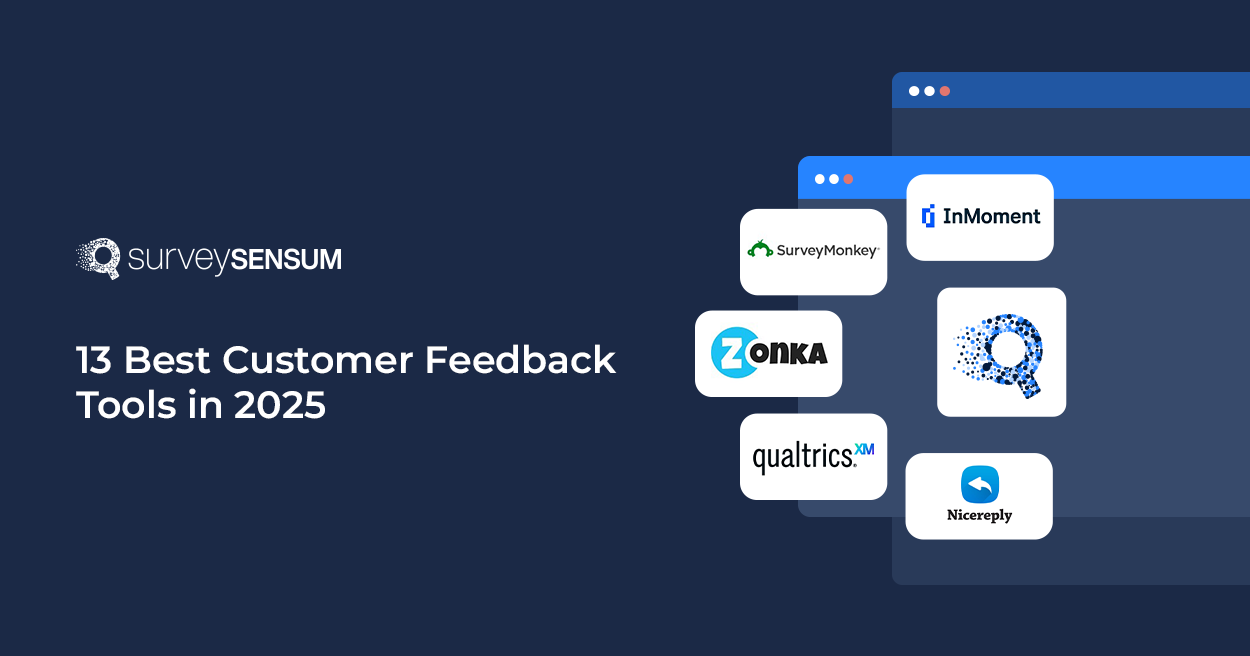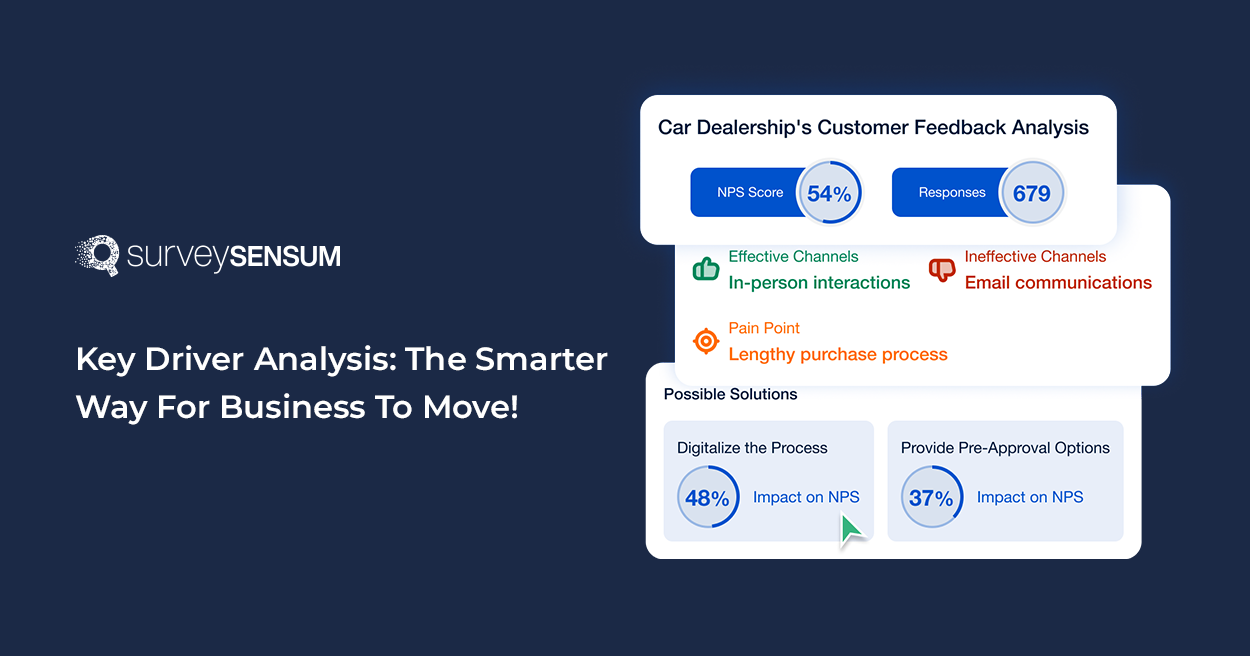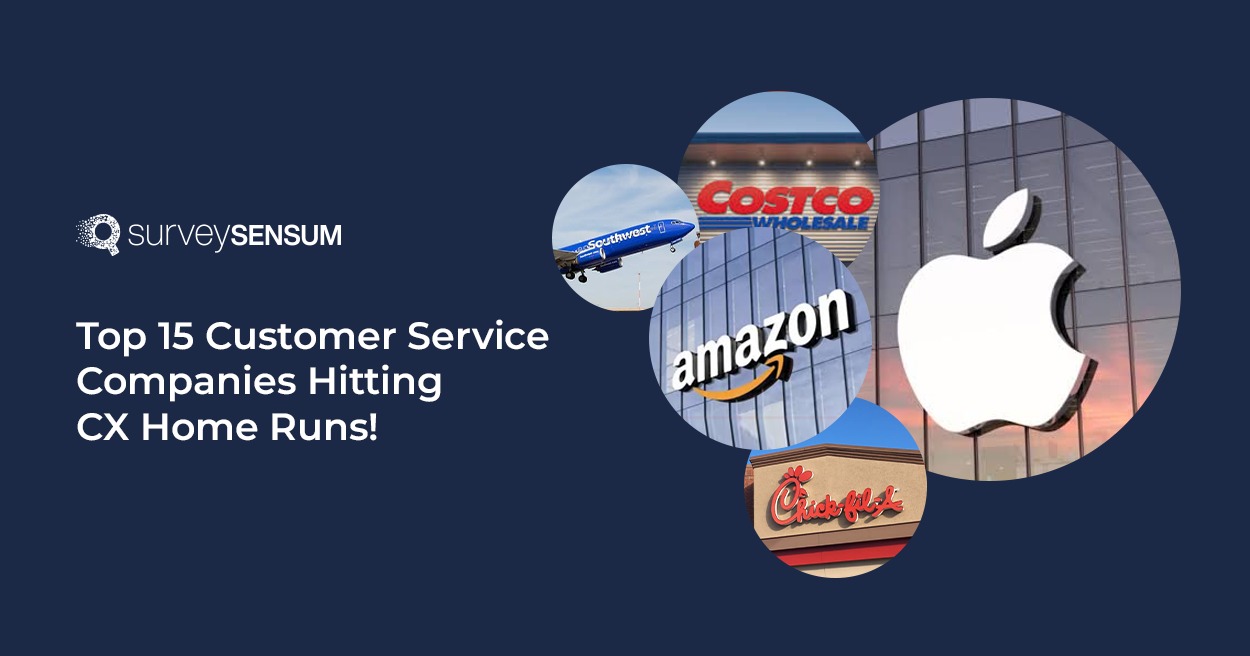
You should always brainstorm ideas and strategize your business activities according to your customers. However, a single approach does not work for everybody since every customer and their journey is unique. That’s where customer segmentation becomes helpful. It helps business owners and marketers to understand their customers better and fulfill their unique requirements.
So, what is Customer Segmentation?
Customer segmentation is a method in which you classify your customers into groups that reflect similarities such as demographic, geographic, behavior, and psychographics, helping you to market each customer more easily and effectively.
Moreover, these customer groups can be utilized to create marketing personas. The marketing personas are basically a representation of a customer segment, and it is common for companies to build various personas to meet their diverse customer segments.
Here’s what a customer persona looks like
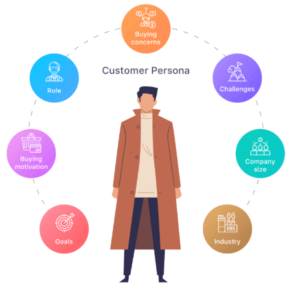
Now that we know what customer segmentation is, why is it so important?
Why should you segment your customers?
Customer segmentation helps companies focus on a group of audiences rather than focusing on a huge one helping companies learn more about customers’ requirements and needs.
Let’s consider a chocolate manufacturing company. Since different customers prefer different tastes, a single type of chocolate won’t work well. So those who like chocolate A are grouped together, and those who prefer chocolate B are grouped together. These groups can again be subdivided based on the prices and sizes of the chocolates. This segmentation helps companies to gather deeper information about the target audience and interact with them more comfortably. It also helps them prepare more efficient marketing and sales campaigns. Additionally, utilizing an Org Chart PowerPoint template can visually represent the hierarchical structure of the marketing and sales teams, facilitating better communication and coordination within the organization.
Basically, the purpose of dividing customers is to determine how to relate customers in each segment to maximize the benefit of the customers which will help in boosting the business. In addition, it helps companies to obtain a more profound understanding of customers’ choices easily.
Some benefits of segmenting customers are
- It helps you to understand your customers’ choices so that you can tailor your services to meet their unique requirements. And when you do that, your customers feel more connected to your brand, boosting customer loyalty.
- You can improve customer service and support by identifying the challenges that each segment will likely experience.
- It allows you to identify high-value and low-value customers by obtaining deeper information so that you can adjust your business goals according to these insights for profits.
- You can recognize new possibilities for products, support, and service efficiently with effective customer segmentation.
Types of customer segmentation
Given below are the 4 main types of customer segmentation:
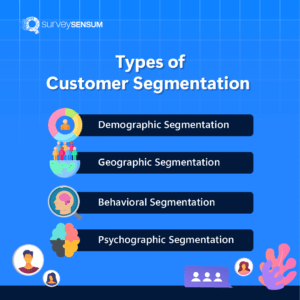
- Demographic Segmentation
Here customers are divided according to demographic factors like age and gender. Socioeconomic factors like household income, marital status, profession, and education also come under this category.
- Geographic Segmentation
In geographic segmentation, customers are divided by their location, usually at the country and city levels. Geographic segmentation is greatly helpful for global businesses where the requirements of customers change wildly from city to city.
- Behavioral Segmentation
Dividing customers according to their buying habits and online behavior, including platform and technology usage, is called behavioral segmentation. It is very useful to find effective marketing techniques as most customers come across online ads.
- Psychographic Segmentation
Psychographic Segmentation divides customers based on their personality, beliefs, and interests,and their responses to the Character Strength Test. Now that we know the basics of customer segmentation, let’s move on to the step-by-step process of segmenting your customers.
How do you segment customers? – Step by Step Process
The following steps will help you segment your customers more easily and efficiently.
STEP 1: Identify your target audience
First of all, determine the customers that give you the highest value. For example, which of your customers are essential for your business? The significance of the particular customers depends on your product or service.
For example, for a B2B SaaS feedback management company, CX professionals, customer support professionals, product managers, and customer success people could be the target audience.
STEP 2: Determine the type of segmentation
The next step is to identify the characteristics according to which the customers can be classified and segmented. For example, it can be the attitude of your customers to the product, their buying behavior, and so on.
After knowing your audience, identify the highest value customers (the ones that give you the most business) and ask them questions to understand their challenges, pain points, expectations, frustrations, roles, and responsibilities, etc. You can ask,
- What keeps you awake at night?
- What are the challenges you are facing?
- What job segment are you responsible for?
- What frustrates you?
- What are you looking for?
- What knowledge or tools do you need for your job?
STEP 3: Use cluster analysis and define segments
Now that you know the behavior, challenges, expectations, and characteristics of the customers, determine the groups of similar customers based on finding the smallest variations among them. It allows you to segment customers more accurately and effectively. Then create customer personas of the respective segments according to their features.
Here’s an example of a customer persona of a traveler.
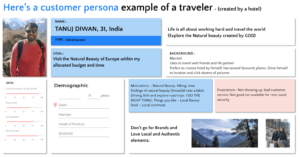
STEP 4: Apply customer segments
You have your customer persona with you now. Modify your marketing strategies according to the multiple customer segments to get the best results. Moreover, if needed, your products and services can also be readjusted/ improved to different customer segments.
Create a FREE NPS, CES, CSAT survey
How does customer segmentation improve marketing?
- It is easier for companies to concentrate on a group of customers rather than a huge one using consumer segmentation. Companies can learn more about customer interests and requirements if the size of the customer group is small.
- Segmenting customers allows you to target a specific audience which gives your marketing campaign a better response.
- Long-term retention of customers is another important advantage of customer segmentation.
- Customer segmentation allows you to make your customer well aware of your brand. It makes customers engage with your brand more effectively and improve your market value.
Difference between customer segmentation and market segmentation
The practice of segmenting your market into approachable groups is called market segmentation. The division is done according to demographics, needs, priorities, common interests, and other psychographic or behavioral criteria. It helps you enhance your product development cycles by telling you how to develop product offerings for different segments.
On the other hand, customer segmentation associates only with your existing customers. Therefore, your current customers are divided into multiple segments based on characteristics such as demographics or behaviors. The main goal of this process is to find profitable customers for your business and retain them.
Proper customer segmentation always has a positive impact on different parts of your company like sales, marketing, product development, customer service, etc. However, to get the best results from customer segmentation, you must prepare and set your objectives clearly before starting.
Frequently Asked Questions (FAQ) on Customer Segmentation
The 4 types of customer segmentation include
- Demographic segmentation – Based on demographic factors like age, gender, etc.
- Geographic segmentation – Based on customer location like country, city, etc.
- Behavioral Segmentation – Based on customer’s online behavior
- Psychographic Segmentation – Based on customer personality, interests, and beliefs.
Customer segmentation is a method in which you classify your customers into groups that reflect similarities such as demographic, geographic, behavior, and psychographics to market each customer effectively and create personas.













